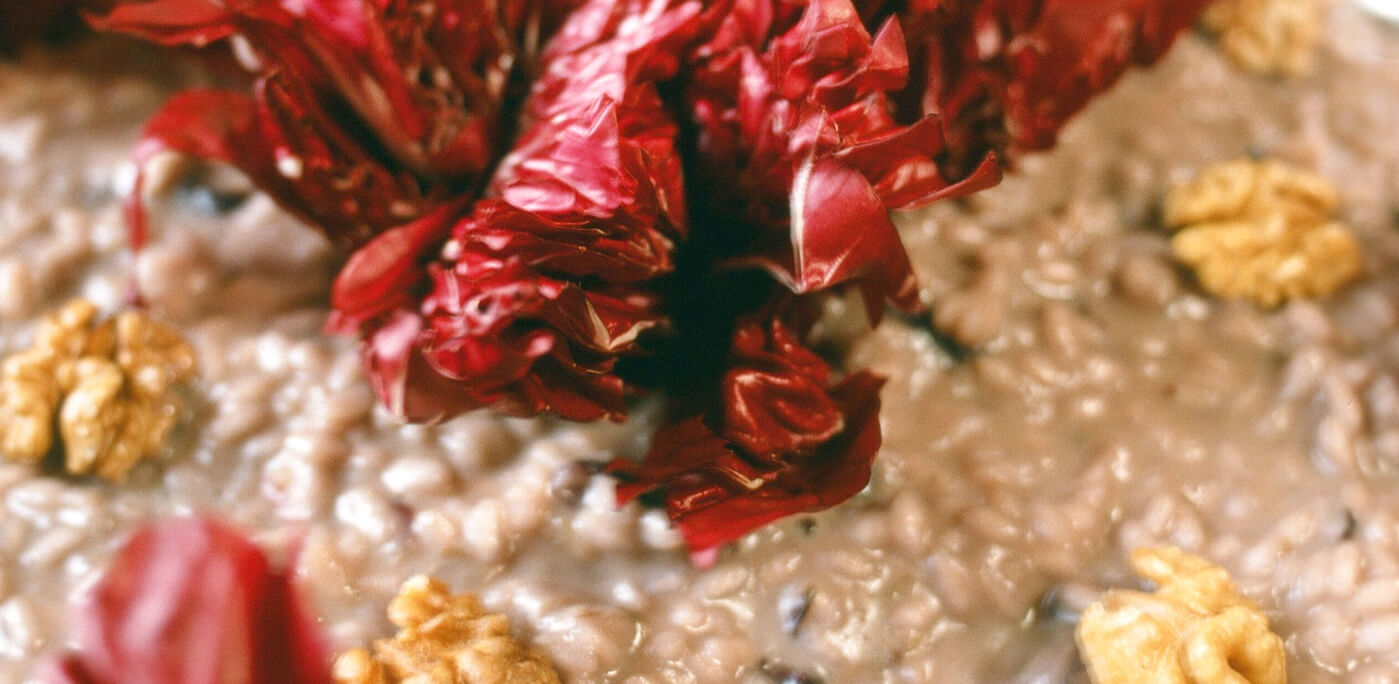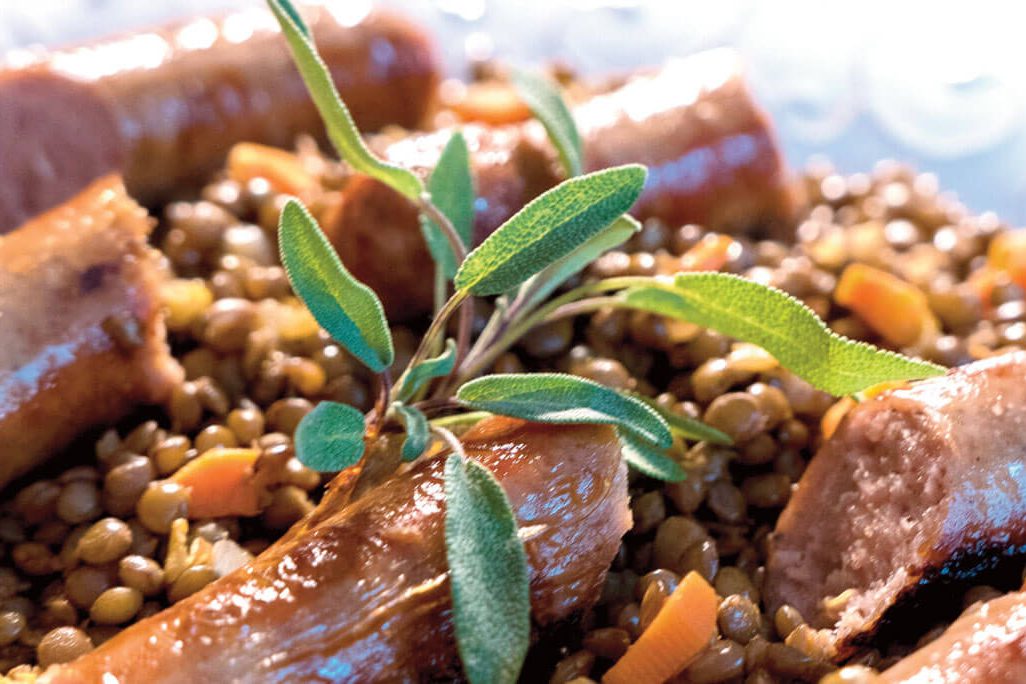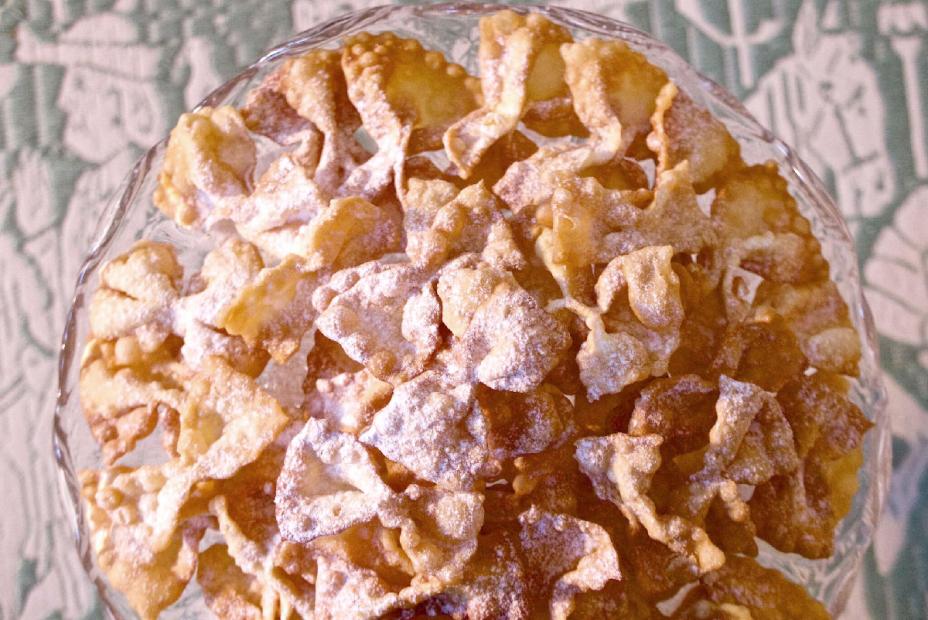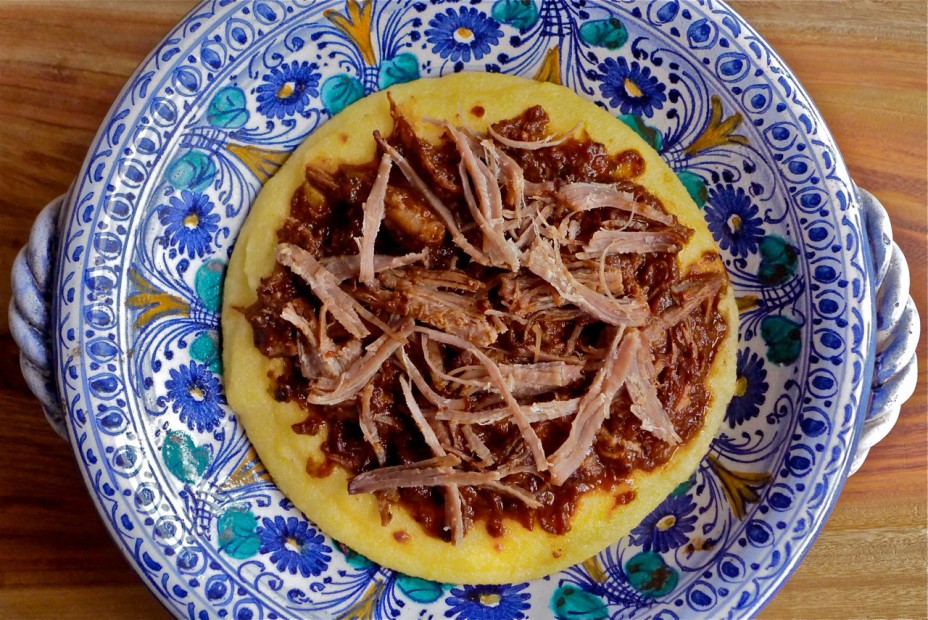The first snow clings to the splashes of stricken marigolds outside my kitchen window. Only yesterday, their little mop-heads bobbed undaunted, taunting winter, as a cold wind whipped my little garden. Even in November of 2016, to see them in all their flaming perkiness was to buoy my spirits.
Staring out at it, I am reminded that radicchio, the Veneto’s blazing scarlet lettuce, will soon be blooming in all its glory and shipped to our markets. Just in time, too. I love its splash of color on my kitchen counter in the dreary days of winter.
Technically a member of the root chicories, radicchio is cultivated in Venice and Padua as well as in the areas that their various names imply: Treviso, Chioggia, and Verona. Less known varieties, some green, are also grown in the region, but for the most part, only the globe-headed Verona radicchio makes it to America.
There is no end of recipes for the pleasantly bitter vegetable that the Veneto loves. They roast it, they batter-fry it, they sauté it, they stuff it; they eat it raw and they eat it cooked. Perhaps best of all, they stir it into risotto, which tints the pearly rice grains pink.
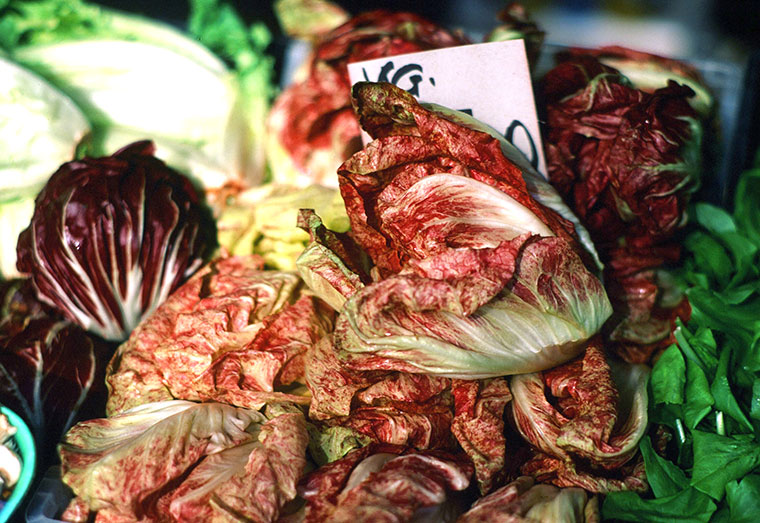
Making Risotto
As any Italian will tell you, making a proper risotto is not a difficult task, as long as you use a tasty broth and suitable rice. Riso vialone nano is considered ideal for Veneto risottos because its grain is highly absorbent and lends itself to risotto al onda, “to the wave,” that is, soupy, the way the seafaring Venetians like it. If you can’t find it, either carnaroli or arborio will do.
The combination of rice and radicchio makes a dramatic looking and delicious risotto. The flavor is particular— delicate with an ever so slight, pleasant bitterness.
Risotto with Scarlet Radicchio
for 5 or 6 people
• about 5 cups tasty meat broth
• 1 pound red radicchio (any variety)
• 1 tablespoons extra-virgin olive oil
• 5 tablespoons unsalted butter
• 1 large red onion, minced
• 1/2 cup Soave or other dry white wine
• 1-1/2 cups vialone nano, carnaroli, or arborio rice
• sea salt
• freshly ground white or black pepper
• generous 1/2 cup freshly grated parmigiano-reggiano cheese, plus additional for the table
• 1/4 cup walnut halves (optional)
1. Place the broth in a saucepan on a burner behind or next to the one on which you will cook the risotto, keeping it hot for the entire cooking time.
2. Core the radicchio. Wash and dry the leaves, setting several aside for arranging on the serving plates later, if you like. Slice the remaining leaves crosswise into fine julienne, then chop them roughly.
3. In a large, wide skillet, warm the olive oil and 3 tablespoonss of the butter over low heat. Add the onion and sauté until it is soft and lightly colored, about 3 minutes. Raise the heat to medium and add the radicchio. Sauté, tossing occasionalloy to cook it evenly, 5 minutes. Remove about 5 tablespoons of the radicchio and set it aside. Cover the pan partially and continue to cook until completely tender, tossing the radicchio frequently and always replacing the cover, about 10 minutes.
4. Stir in the rice with a wooden spoon, folding it together with the radicchio to coat it evenly. Now stir in the wine. When it has been fully absorbed and the alcohol has evaporated, after about 3 minutes, add a ladleful of the hot broth and stir to permeate the contents of the pan. When the broth is absorbed, add another ladleful of the broth to the rice and cook until it, too, is absorbed. Add another ladleful of broth, following the same procedure each time, ensuring that it is absorbed by the rice before adding more. Proceed in this way until the rice is tender, which should take about 25 minutes altogether. If you run out of broth at the end, you can use hot boiling water to finish up. When it done, the risotto should be very moist, almost wet, and the rice grains should be tender but still somewhat firm at the center, “al onda,” like a wave.
5. Remove the skillet from the heat and taste for salt and ad pepper. Stir in remaining butter and the cheese, working the ingredients together for several minutes. This finishing touch, referred to as “mantecare,” to whisk or beat, is an essential part of the risotto technique.
6. Transfer the risotto to a warmed, wide, shallow serving bowl, strew the radicchio that has been set aside over the top, and scatter the walnuts, if using, on top. Serve immediately, passing additional parmigiano at the table.
Julia della Croce is a print & broadcast journalist and James Beard award-winning cookbook author, cooking teacher, culinary consultant & recipe developer. You can visit her on her website, www.juliadellacroce.com and blog, http://juliadellacroce.com/forktales1/ Connect on Facebook: Julia della Croce – chef & foodwriter Twitter: @juliadella croce, Instagram: juliadellacroce
